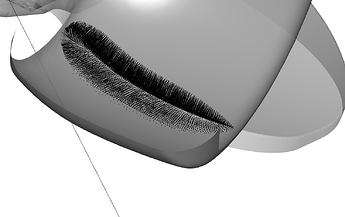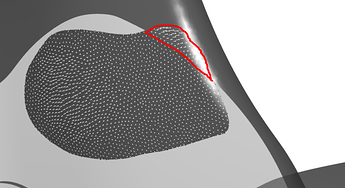Dear Anybody Team,
I want to build a FDK knee joint model including surface contact forces. During the contact on the posterior edge, we can see in the first picture that the posterior surface of the tibia inlay is included as a contact surface, which is incorrect and distorts the results leading to an increased posterior translation of the femur relative to the tibia inlay.
Increasing the pressure module, reduces the contact on the posterior surface of the tibia inlay, but the FDK model is more unstable because the contact surface on the posterior edge is small.
Then I tried using only the contact area of the tibial inlay to define the contact area, but the model shows contact forces where there is visibly no contact between the two surfaces (shown in the second image and highlighted in red).
Why does this happen?
Is there any possibility to model the contact on the posterior edge in a stable way without including the posterior surface of the tibia inlay?
Thanks and best regards,
Sabrina

